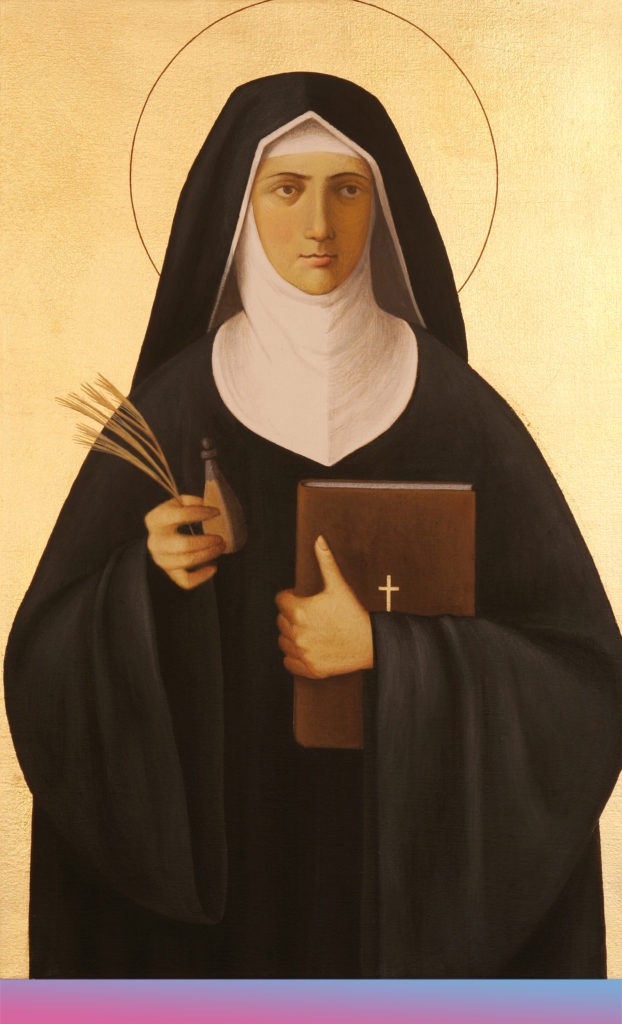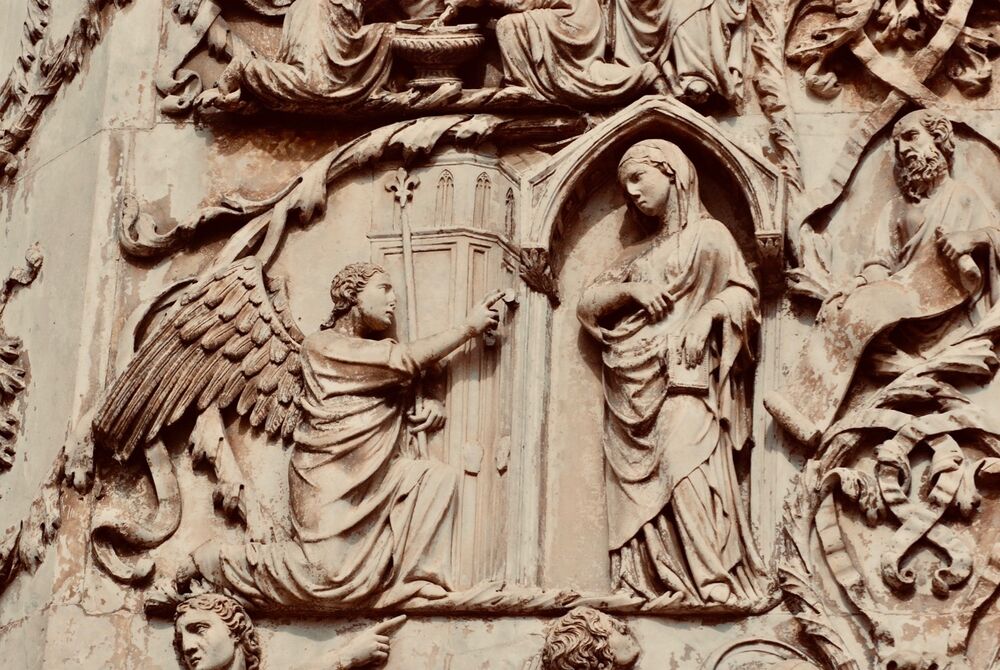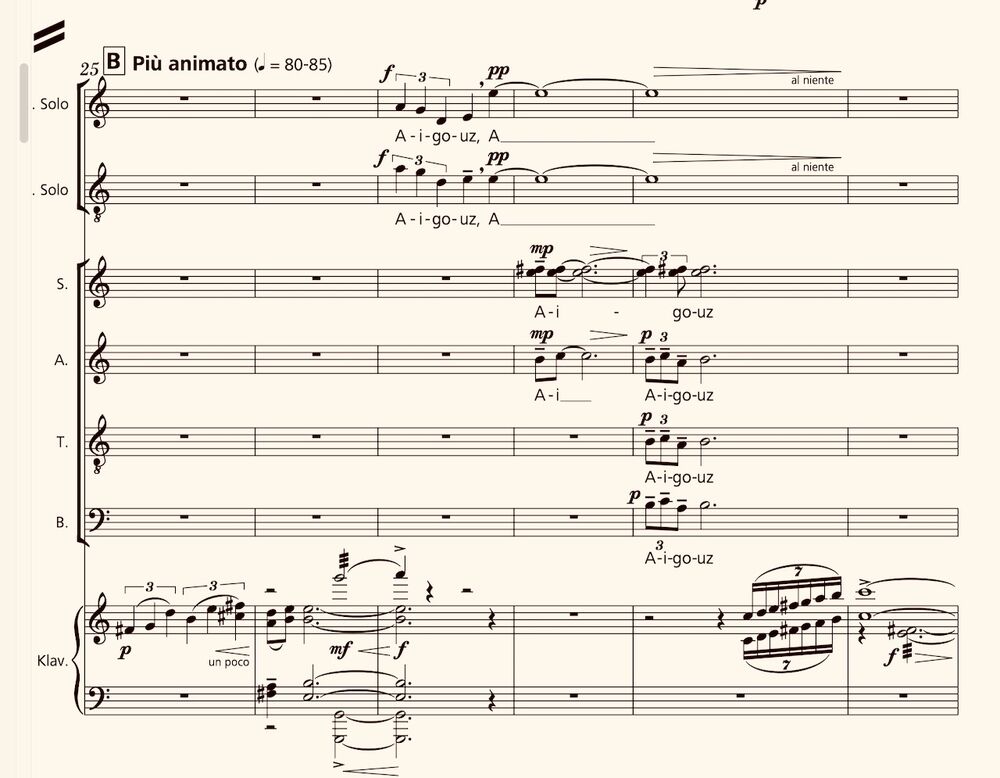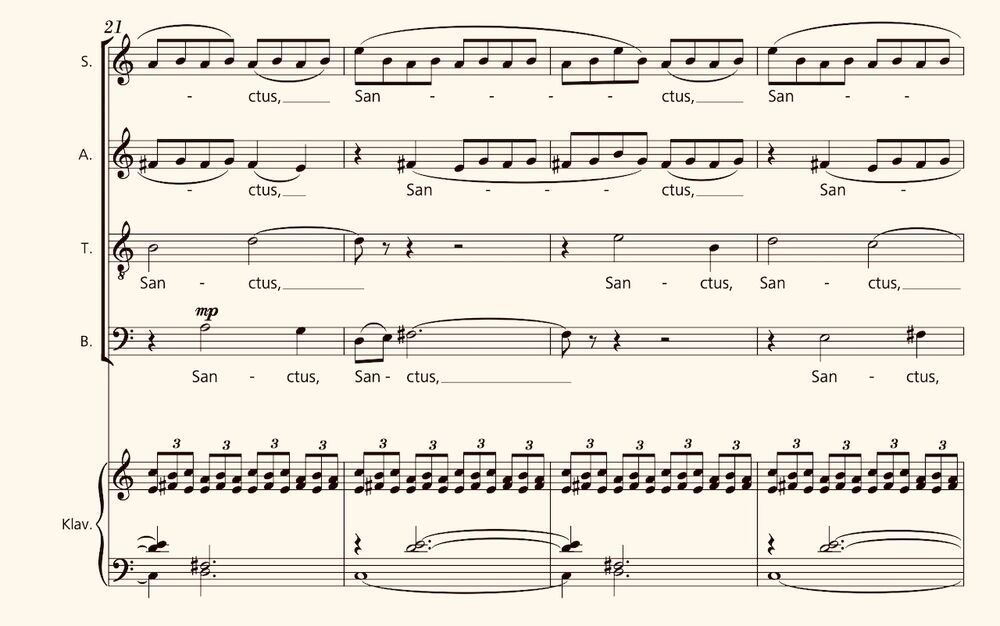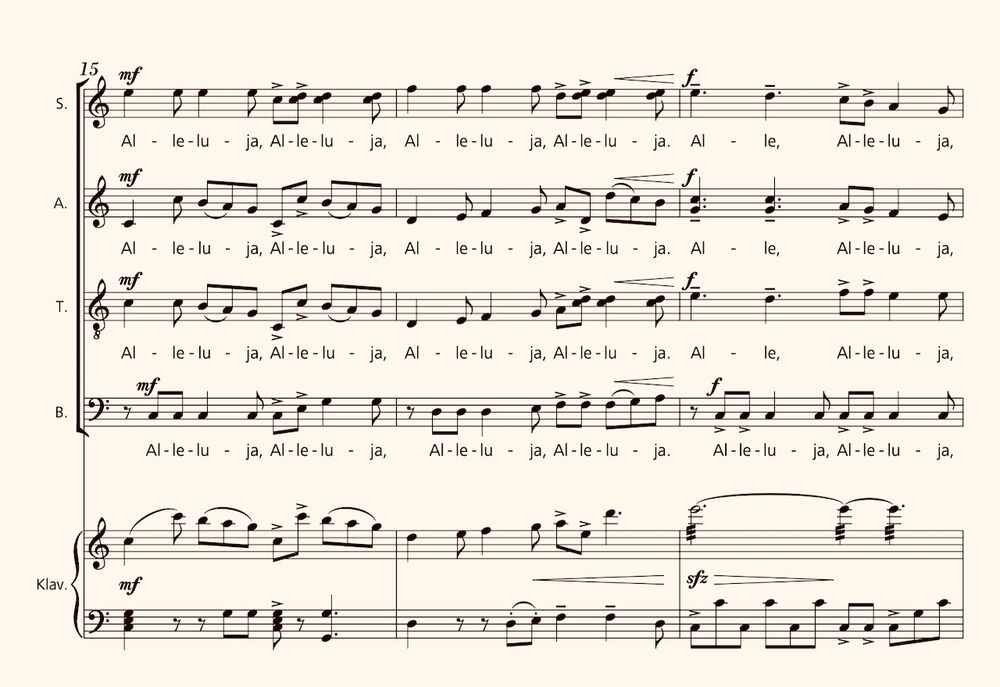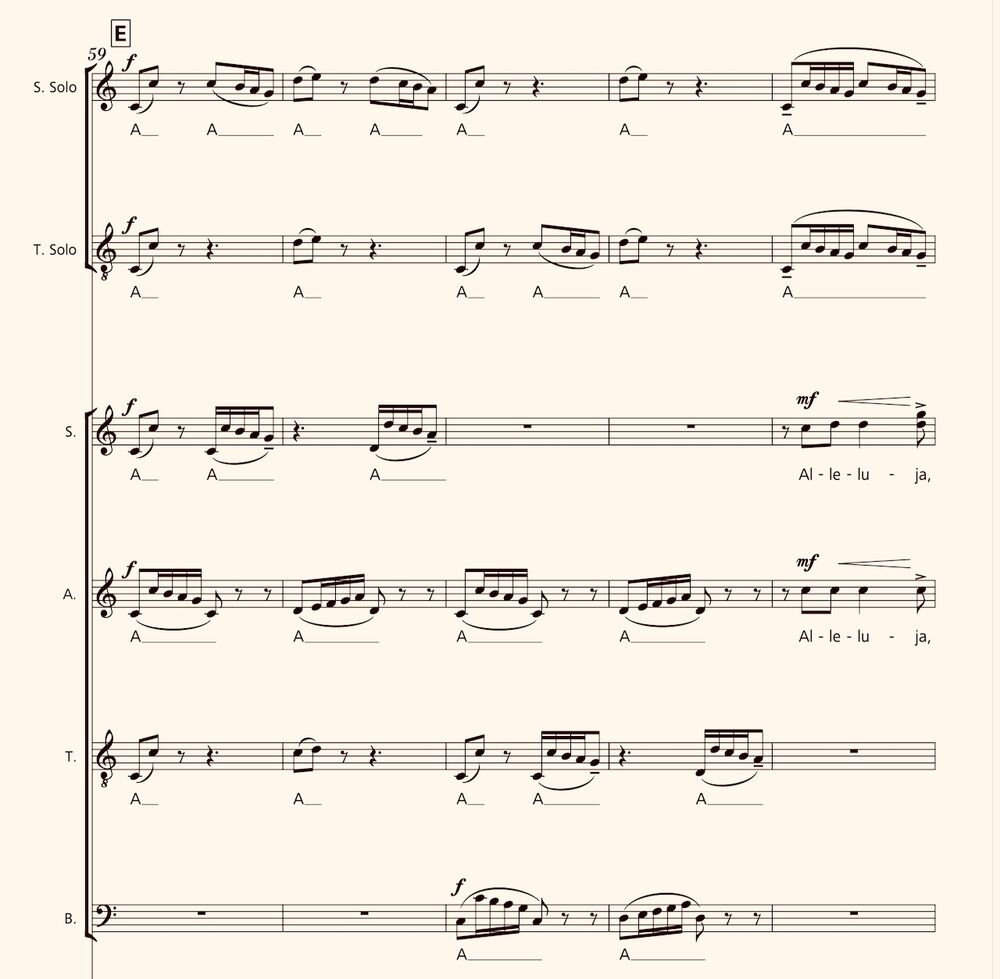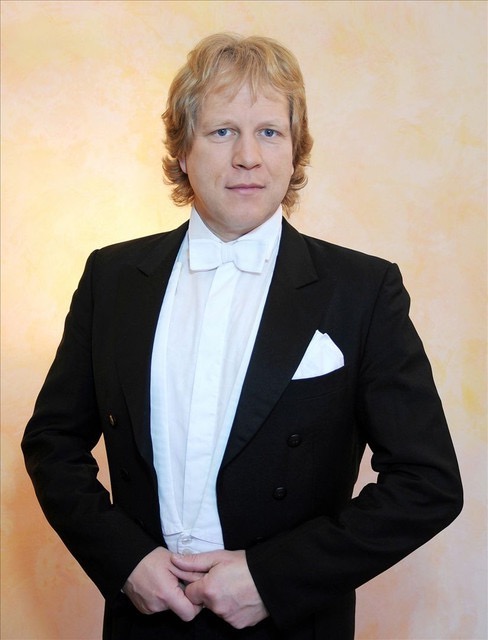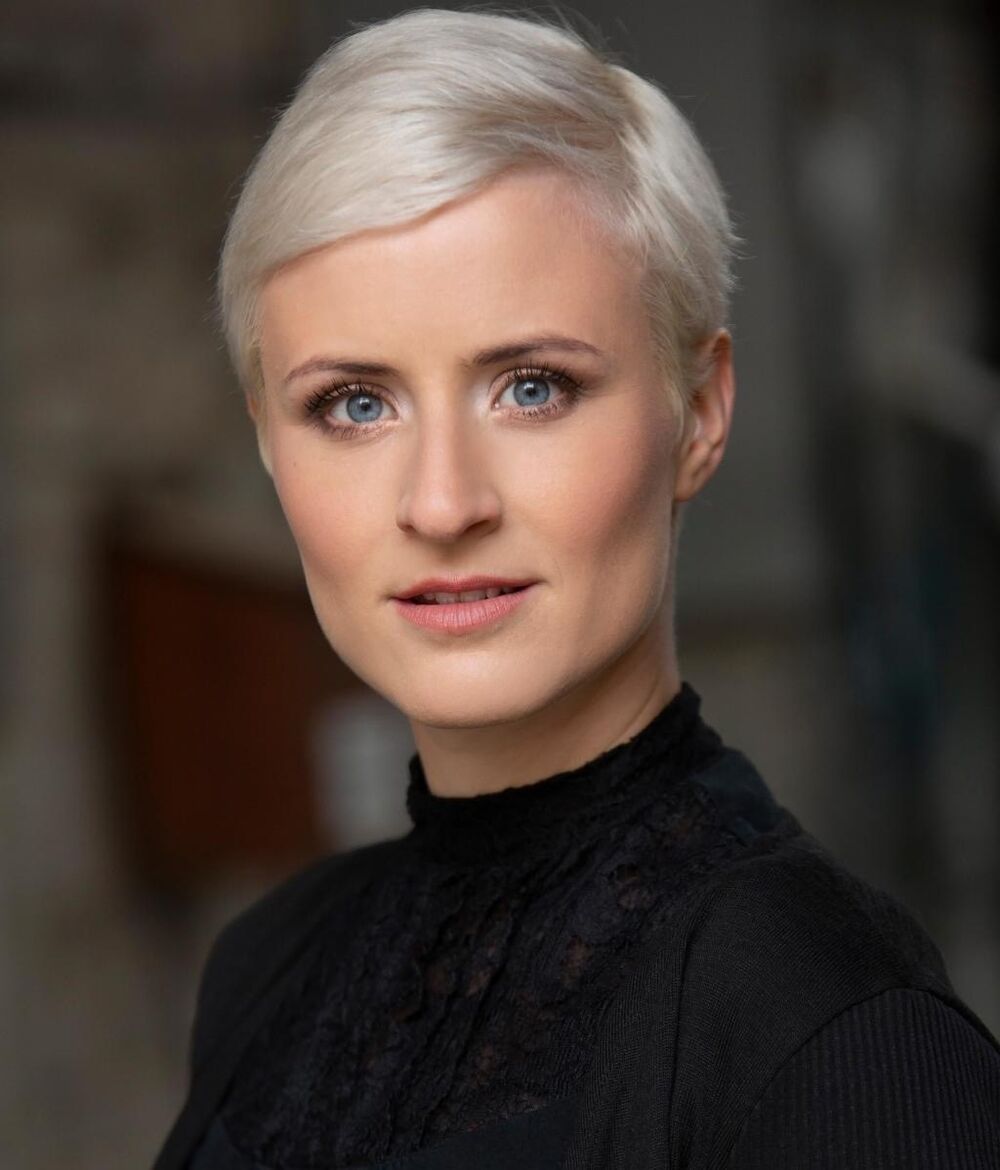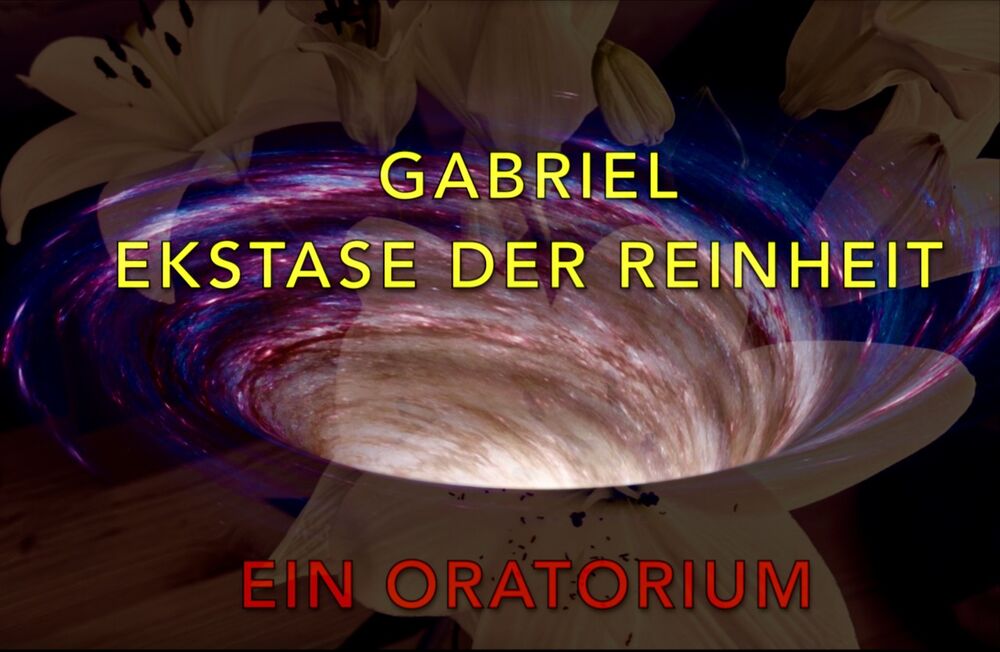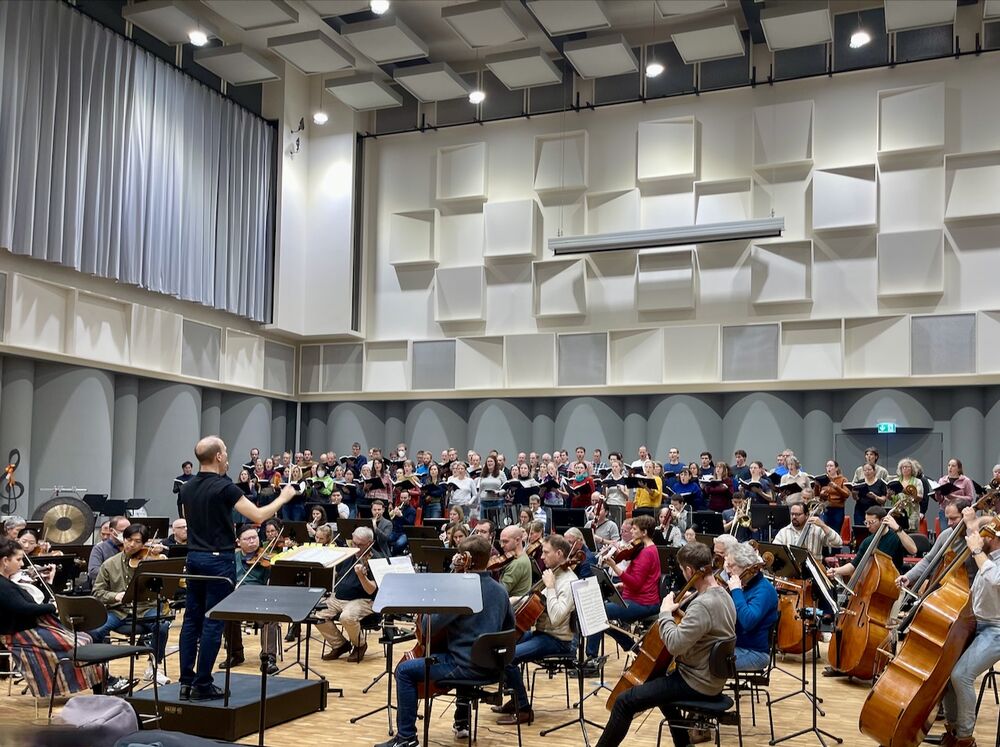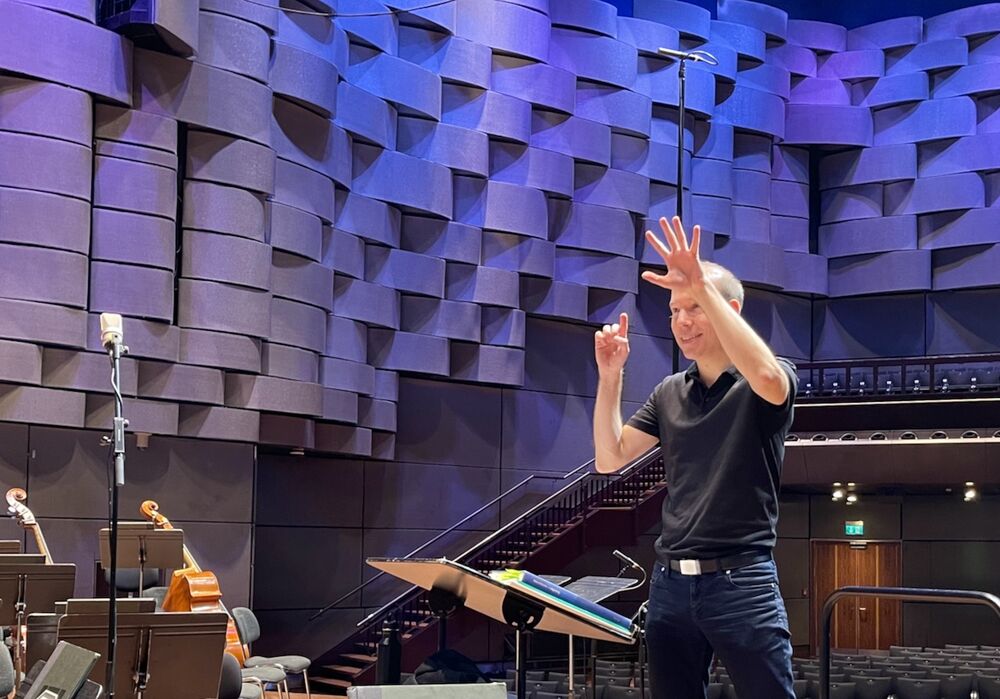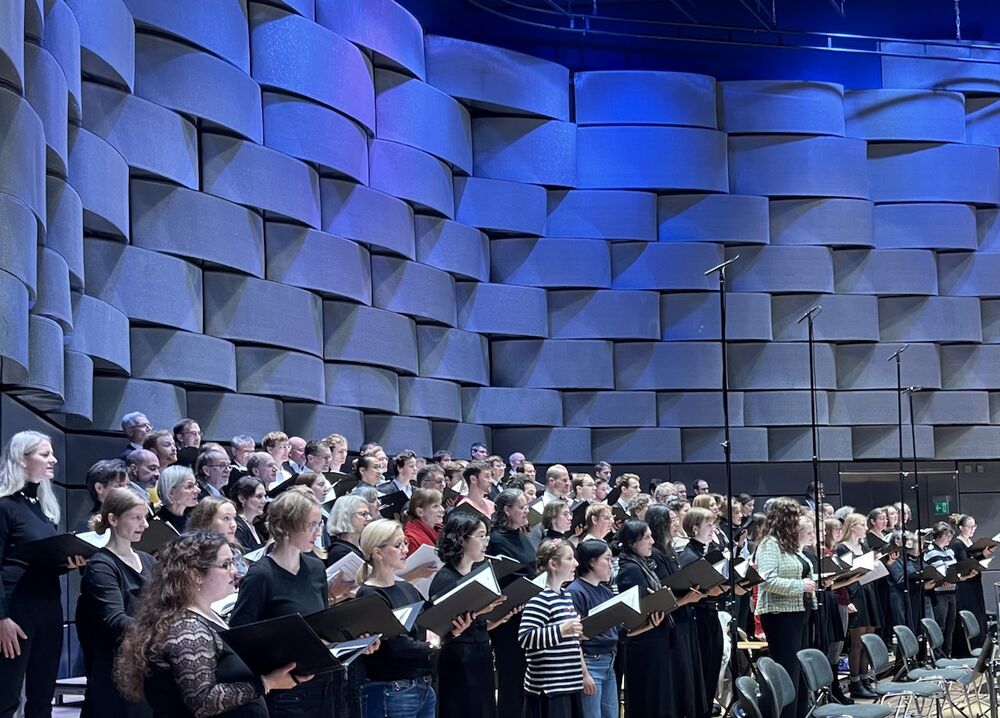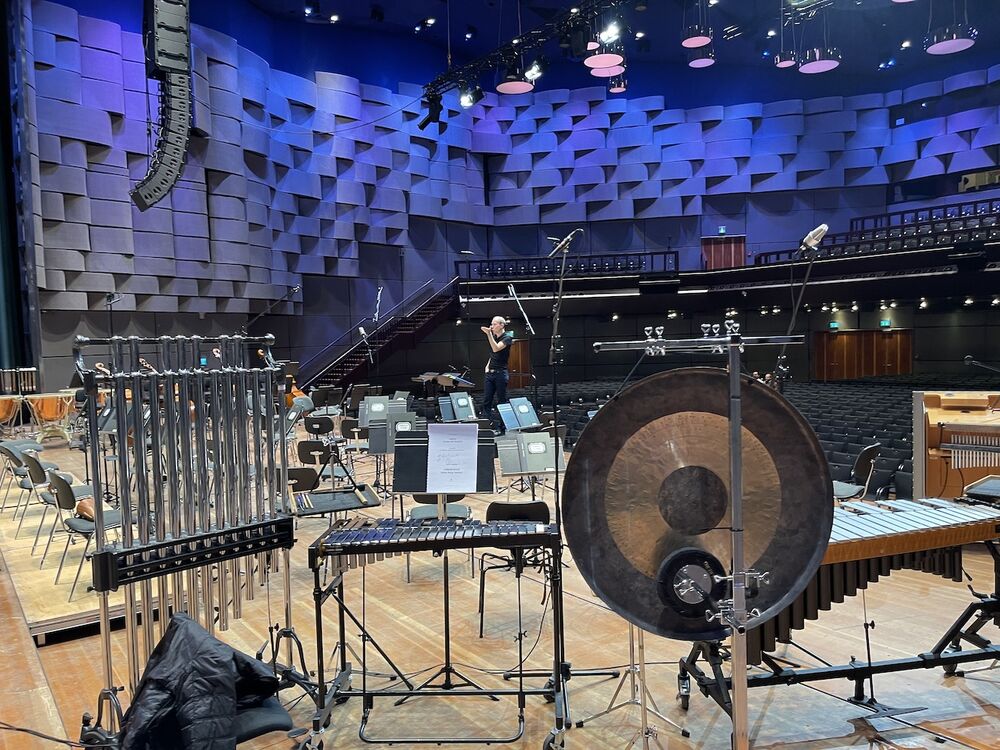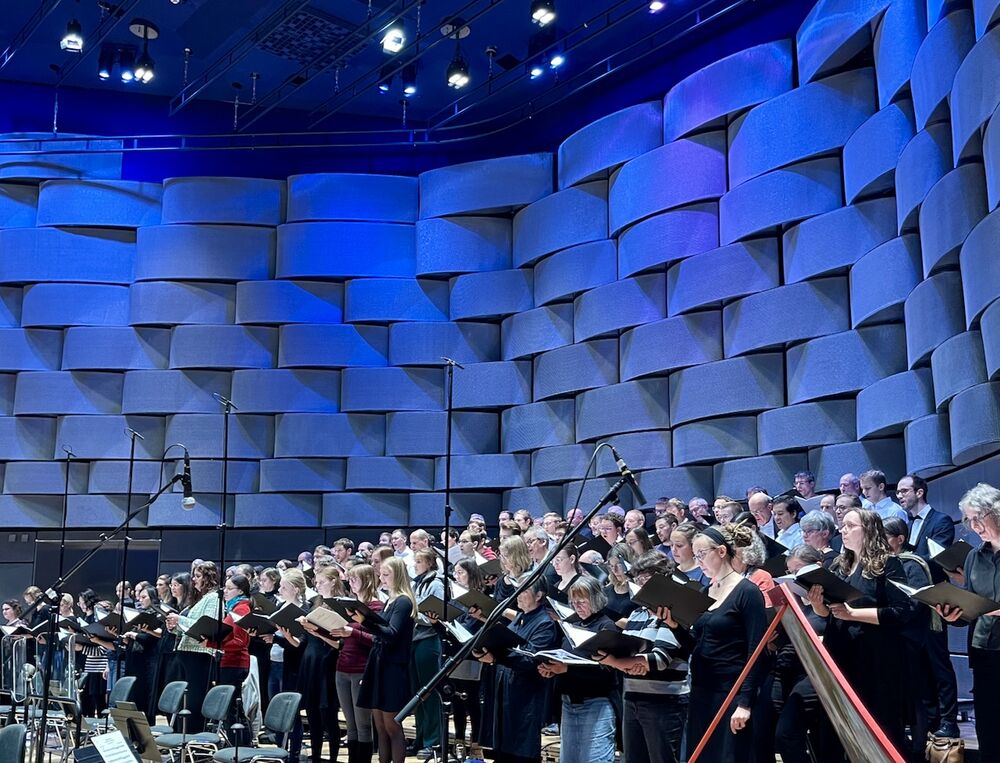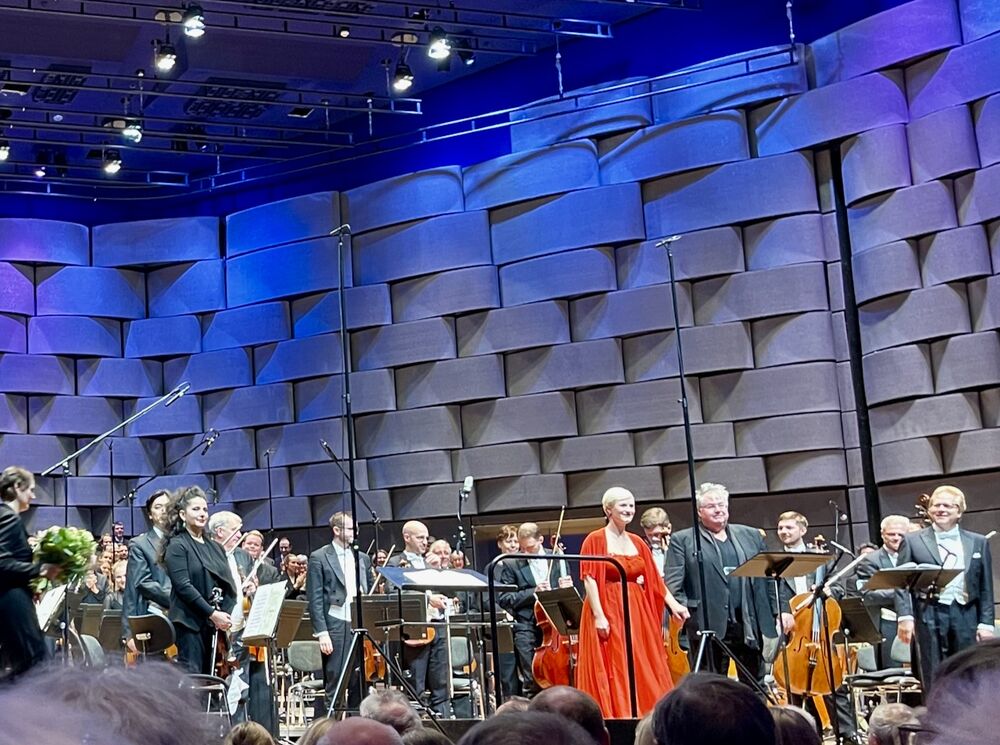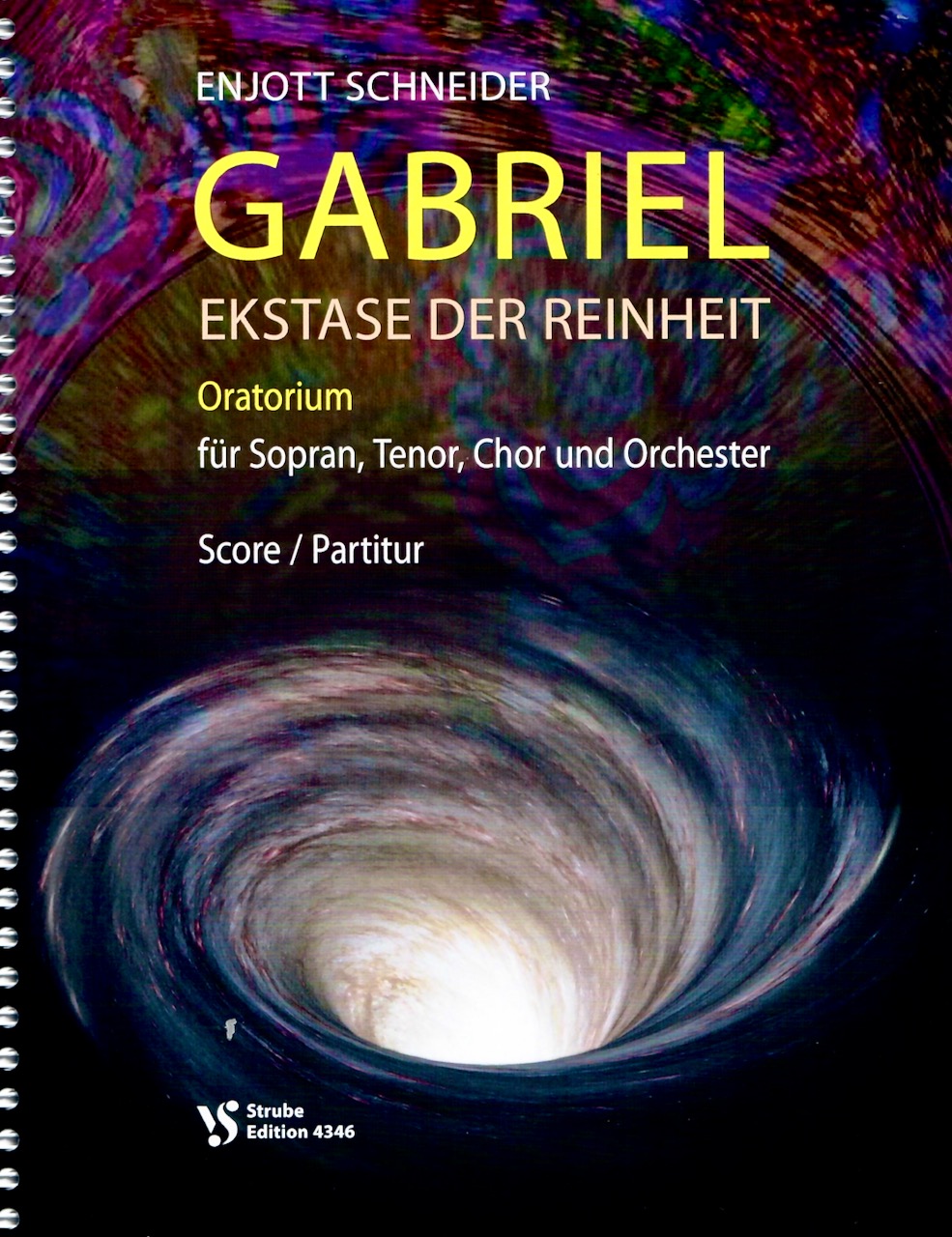
Category: Symphonic / Orchestral , Choir / Vocal , Organ / Sacred Music
The reality of the angels is closely connected with the existence of that comprehensive intelligence of the universe which many religions also call "God" and which cannot be experienced with the mind but only with cosmic consciousness. GOD as the universal "All-One" is nameless, immaterial and a spiritual principle. The angels are the messengers of this nameless primal principle of all being. In the arts and religious narratives, "angels" have become binding, trivialised and far too materially conceived. All hierarchies or differentiations are only man-made and e.g. hardly mentioned in the Bible, where there are also only Gabriel, Michael and Raphael by name. "Gabriel" means "The Power of God". As the guardian of the white ray of light, he stands for purity and clarity. He is the angel of the Annunciation, pointing to new beginnings and spiritual rebirth.
- The oratorio EKSTASE DER REINHEIT is an attempt to grasp the phenomenon of angels, which is located in the sphere of the conceptless, as messengers of a universal dimension.
Movements: 1: GABRIEL, THE POWER OF GOD
2: O GLORIOSISSIMI LUX VIVENS ANGELI (Hildegard von Bingen)
3: SANCTUS, SANCTUS, SANCTUS
4: ANGEL OF THE ANNUNCIATION (Lucas 1, 26-35)
5: THE LILY (William Blake)
6: GABRIEL, THE LIGHT
7: ALLELUJA
Duration: 20 Minutes
Publisher of notes/sheet music: , 2023
Instrumentation: Soprano Solo and Tenor Solo
Choir (S S A T B)
2 Fl (2. Also Picc) / Oboe / 2 Clarinets / Bassoon /
2 Horns / 3 Trombones (T T B) / Timpani / 2 Percussions
String Orchestra (Vl 1+2 Vla Vc Cb)
Text/Lyrics by: Texte aus Liturgie und Lukas-Evangelium, Hildegard von Bingen (1098-1179) und William Blake (1757-1827)
Introduction: The reality of the angels is closely connected with the existence of that comprehensive intelligence of the universe, which many religions also call "God" and which cannot be experienced with the mind but only with a cosmic consciousness. This universal "All-One" is nameless, immaterial and a spiritual principle. It eludes every concept, every image or other sensual representation, for these would always be bound to the sensuality of material reality and to the highly limited horizon of the intellectual mind. The reduction of the world to the measurable and nameable material is the characteristic of the only short-lived "knowledge" of an ego-consciousness, which, however, urgently needs to be transferred into the "wisdom" of the universal cosmic consciousness.
In contrast to the human- or animal-shaped gods of the polytheistic religions, the "All-One" God in Judeo-Christian-Islamic monotheism remains a rather imageless abstract. Through ritual laws, food or hygiene regulations, a world of rules is created that was "comprehensible" to the intellect-oriented and ego-like human being. The founder of religion, Moses, with his Ten Commandments, which demand an abstract imagelessness and namelessness, however, represents the opposite of such comprehensibility.
Moses, who was actually Egyptian and not Hebrew, established an image of God that was almost identical to the radical monotheism introduced by the ancient Egyptian pharaoh of the 18th dynasty, Akhenaten: he tried to introduce the god Aton in the form of the sun disk as the sole "god of light". Akhenaten failed politically due to the resistance of both the people and the priestly caste and was eliminated without trace from the royal lists and Egyptian historiography. The radicality of his cosmic conception of God, however, remained indelibly in the world.
In his epoch-making book "Moses the Egyptian. The memory of Egypt in Western Monotheism" (1997), Jan Assmann traced the consequences of adopting the idea of God from the Egyptian mysteries, which can hardly be overestimated. Alongside Judaism, Christianity, Greek antiquity (e.g. in Pythagoras), and parallel to Arabic alchemy based on Hermes Tresmegistos, the traces of ancient Egyptian memory reached a climactic intensity in the 18th and 19th centuries: the more pronounced the Egyptophilia, which was also better documented archaeologically, became, the more dominant - especially in the extra-church and philosophical tradition - a concept of God handed down there became noticeable.
The impact of Mozart's "Magic Flute", the Napoleonic Egyptian expeditions, the veneration of Egypt as a place of wisdom by the Freemasons are all worthy of mention. The overlaps with biblical-Jewish traditions are obvious. The analogy of the Hebrew God-cipher YHWH as the abstract as well as nameless "I am who I am" is found, for example, in Hermeticism as "unus et omnia" (the All-One) or "Hen kai pan".
The same is true of the pyramid at Sais, where the inscription "I am all that is, was and will be" is found under the statue of Isis (who was later equated with Athena). This biblical-Egyptian-Hermetic idea of the nameless god was handed down through generations, for example also in Schiller, Goethe, Novalis, Hölderlin. Even Beethoven copied his deist credo from Friedrich Schiller's essay "The Mission of Moses", which he had framed under glass on his desk: "I am what is there". This tradition of referring to a God "who is not distinguished by a name, but by the withdrawal of a name, by namelessness" (Jan Assmann) goes back to the subversive Pharaoh Akhenaten, passed on to Israel via the Egyptian Moses. This monotheistic insight - coupled with the insight that such God prefers to reveal himself in pure 'nature' (or natural laws) - made all people brothers, whether Christians, Jews, Muslims or the supposed 'pagans' of (for example Egyptian or Greek) antiquity.
- - -
So what does this (almost unforgivably abbreviated) roundabout on the history of religion have to do with "angels"? The answer is obvious: the intelligence of the universe, i.e. the abstract, nameless and imageless supreme spirit being (designated as "God") needs a comprehensibility. This "all-one" God must be made tangible to man. And so the need for messengers of God arose. Angels are immaterial spiritual beings between the human realm (based on reason and ego-consciousness) and the divine realm (withdrawn from all reason and conceptualisation). Angels are therefore messengers of the gods, messengers of God, - in Hebrew "malak", in Greek "angelos".
When the visions of such messengers of God appear in the everyday life of matter-bound people, it is always associated with shock and terror. Rainer Maria Rilke formulated this strikingly at the beginning of his "Duino Elegies": his "Every angel is terrible!" says intuitively rather than cognitively that the multidimensionality of reality, when the beings of materiality and immateriality meet, is mysteriously and painfully incisive. Understanding and reason - the guarantors of coping with our material illusory world - must fail when the angels appear to us.
All these are not old wives' tales from the esoteric brains of unrealistic phantasts. The seriousness regarding the authenticity of spiritual beings at the interface of material and immaterial being, at the interface of wave and particle (to have touched the quantum and atomic physical realm at least once)... this seriousness can be documented even to the sceptics at least on the basis of two topics: 1) with the implications of near-death experiences and 2) with the always similarly recurring structure of enlightenment experiences as a breakthrough of cosmic consciousness in spiritual development. Finally, a few remarks on this:
1) There has long been an extensive medical and scientific literature on near-death experiences (NDEs), as well as international documentation across cultures, historical sources and age groups. Fascinating similarity of the reports, which have been documented since Plato, for example, even among children or ethnic groups far removed from civilisation, where visual influences (such as through film and television) are excluded. Among the sterotypes documented hundreds of thousands of times is the light seen here and the appearance of mostly bright spirit beings that correspond to the idea of angels.
2) In the biographies of many important mystics, philosophers, artists or scientists, it is documented how sudden revelations, radical reorientations, knowledge decryptions or awakening experiences usually occur in midlife. Such breakthroughs of cosmic consciousness are documented, for example, in Moses, Paul, Lao Tzu, Gautama Buddha, Mohammed, Socrates, Dante Aligieri, Jakob Böhme, Blaise Pascal, Roger Bacon (alias Shakespeare), Benedict Spinoza, Emanuel von Swedenborg, William Blake, Honoré de Balsac, Friedrich Nietzsche, Henry David Thoreau, Walt Whitman - a list that could be impressively extended. An excellent account is given by Richard Bucke (1837-1895) in his book "Cosmic Consciousness. On the Evolution of the Human Mind) from 1901, which has long since become a classic of depth psychology. R. Bucke shows that these visions, which are often connected with the appearance of angelic mediators, - for example with Mohammed, who called the cosmic sense "Gabriel" when intuitively writing down the Koran, with Dante, who named the cosmic sense "Beatrice". R. Bucke is also able to show that such described initiations or spiritual rebirths have nothing to do with mysticism, occultism or established religions. He describes these clearly defined spiritual states of a holistic view of the universe from a psychological point of view. - - - -
In this context outlined so far, the oratorio GABRIEL - EKSTASE DER REINHEIT is a stammering attempt to grasp the phenomenon of the angels, located in the sphere of the nameless and conceptless, as messengers of a universal spiritual dimension. The consistent parameters here are also the light quality of cosmic consciousness (whether glistening brightness, white ray of light or flaming fire), the silencing, stammering or the reduction to primal sounds such as "A" and "O" (because all linguistic ability fails when experiencing the All-One Sphere). The perception of time changes in view of the sensation of "eternity". Above all, the I-consciousness with the "thinking" of the I-like mind has to pale completely in the face of the angels - as the pre-stages to "God". The I-like thinking evaluates in polarities. These polarities have disappeared in the immaterial world: beings are (also in the reported near-death experiences) androgynous beyond female-male; there is no valuation of good-evil (the sinner or the publican are full human beings with Jesus), the antinomy of life versus death has lost its horror. : even light has lost its polarity of light versus shadow: unanimously the paradox of "shadowless light" is described, experienced only as warming bright love without negative cloudiness.
Angels liberate from the fetters and heaviness of matter, liberate from ego-consciousness with its limitation of the mind. That is why they are symbolically depicted - especially in the arts - as beings with wings.
Remark on the seven Movements:
Movement 1: "Gabriel" is one of only three angels mentioned in the Bible and means "The Power of God". He is a torch in the dark night and as the guardian of the white ray of light he stands for purity and clarity. He is the angel of the Annunciation, who refers to a new beginning and spiritual rebirth (prototypically also in Mary and Elizabeth).
Movement 2: Hildegard von Bingen (1098-1979) was a great visionary whose entire work was permeated by the experience of angels as messengers from the eternal dimension. Her antiphon
"O gloriosissimi lux vivens angeli" refers to the central "light" and attempts to evade first-person language through stammering metaphors and an emphasis on the invoking vowels. Significantly, Hildegard von Bingen created a secret language with her "Lingua Ignota" to express the otherworldly of her spiritual experience. From this, four words from A to Z are brought to sound in conclusion: "Aigouz" (God) and "Aieganz" (angel), "Zuuenz" (the sacred) and "Zilix" (companion).
Movement 3: "SANCTUS" is the praise of the eternal from the spirit of a fundamentally positive attitude, - in the immaterial world there are no more polarities and no "good-evil".
Praise of the universe is therefore in principle the task of the angels. In the book of Isaiah 3:6, the threefold holy is first attributed to the angels in Isaiah's vision of vocation and is still a central point of transcendental vision in today's liturgical forms. The singing of the "Sanctus" is regarded as participation in the heavenly liturgy.
Movement 4: Here, from the beginning of Luke's Gospel in Latin, perhaps the most famous mention of the angel Gabriel is evoked - his appearance as the angel of the Annunciation. First with Elizabeth, then with Mary, the birth of John the Baptist and of Jesus is announced by Gabriel.
Movement 5: In his poem THE LILY, William Blake (1757-1827) intuitively clarified the central parameters of cosmic consciousness - the purity of the white colour and the absence of polarity: while the beauty of the rose is still counteracted by the thorns, the beauty of the lily is unsullied.
Movement 6: Volumes of statements and wisdom could be compiled about "light" as the source of the universe and of life in general. It runs through (also related to flames and fire) all reports and representations of the sacred (see also the halo), of pure spirituality, of visions and cosmic vision. It is not for nothing that the Egyptian Akhenaten placed the sun as "Aton" in the centre of his divine Nameless One; it is not for nothing that Moses in Genesis begins the creation of the world with "There was light!"; it is not for nothing that the process of man's dying is described across cultures and time periods as an entry into the light. Just as nirvana contains all life, or "zero" mathematically contains all numbers, just as all sound arises from silence, so the whitest ray of light - appropriately attributed to Gabriel - contains all the spectral colours of the rainbow.
Movement 7: The praise of creation, the fundamentally positive orientation of the angels as messengers of a perfect All-One Universe, is embodied in the jubilant invocation of ALLELUJA. Beyond language, only as sound, the mystery of the existence of our world is celebrated - the "core business" of all angels, so to speak.
Dedication: Dedicated to my son Gabriel
Additional remarks: Auftragskomposition des Aachener Bachvereins (künstlerischer Leiter Georg Hage) für ein Festkonzert zum 50. Jubiläum der Aachener Bachtage. Im Konzert zusammen mit der Philharmonie Südwestfalen erklingt auch von J.S. Bach die Gloria-Kantate BWV 191 sowie von F. Mendelssohn-Bartholdy der "Lobgesang".
- - - - - - -
TEXTE in Latein und Englisch:
Satz 1: instrumental
Satz 2: Antiphon der Hildegard von Bingen (1098-1179)
O gloriosissimi lux vivens angeli (O ruhmreiche Engel des lebendigen Lichts)
qui infra divitatem (In der Gottheit entdeckt ihr)
divinos oculos (mit göttlichen Augen)
cum mistica obscuritate (in mystischer Dunkelheit)
omnis creature aspicitis (die gesamte Schöpfung)
in ardentibus desideriis (mit brennender Sehnsucht)
unde nunquam potestis saciari (und niemals könnt ihr euch daran ersättigen.)
Satz 3:
Sanctus, sanctus, sanctus (Heilig, heilig, heilig)
Dominus Deus Sabaoth (Herr aller Mächte und Gewalten)
Satz 4:
Die Verkündigung (Lukas-Evangelium 28-32)
28: Et ingressus angelus ad eam dixit (Und der Engel kam zu ihr herein und sprach:)
Ave gratia plena Dominus tecum (Gegrüsset seist Du, der Herr sei mit Dir)
Benedicta tu in mulieribus (Du Gebenedeite unter den Frauen)
29: quae cum vidisset turbata est (Als sie ihn sah erschrak sie)
In sermone eius et cogitabat (über seine Rede und dachte:)
Qualis esset haec salutatio (Was ist das für ein Gruss?)
30: et ait angelus ei ne timeas (Und der Engel sprach zu ihr:)
Maria invenisti enim gratiam (Fürchte dich nicht, Maria!)
Apud Deum (du hast Gnade bei Gott gefunden.)
31: ecce concipies in utero (Siehe, du wirst schwanger werden)
Et paries filium (und einen Sohn gebären)
Et vocabis nomen eius Jesum (den sollst du mit Namen Jesu heißen.)
Satz 5: Poem by William Blake (1757-1827)
The modest Rose puts forth a thorn,
The humble sheep a threat’ning horn:
While the Lily white shall in love delight:
Nor a thorn nor a threat stain her beauty bright.
Die schlichte Rose bringt einen Dorn hervor,
Das bescheidene Schaf ein drohendes Horn:
Während die weiße Lilie mit der Liebe erfreut:
Kein Dorn, keine Drohung befleckt ihre helle Schönheit.
Satz 6: Das Licht der Ewigkeit, instrumental
Satz 7: Alleluja
------------------
Der Hildegard-Forscherin und Theologin Dr. Barbara Stühlmeyer danke ich für Beratung und Übersetzung der Hildegardschen Texte.
World premiere: 12.11.2023, Aachen im Eurogress
Performers at world premiere: World Premiere: 12th of November 2023 at the: 50. Aachener Bachtage im Aachener Eurogress mit dem Aachener Bachverein, der Philharmonie Südwestfalen, Katharina Persicke (Sopran), Markus Schäfer (Tenor), Leitung: Georg Hage

